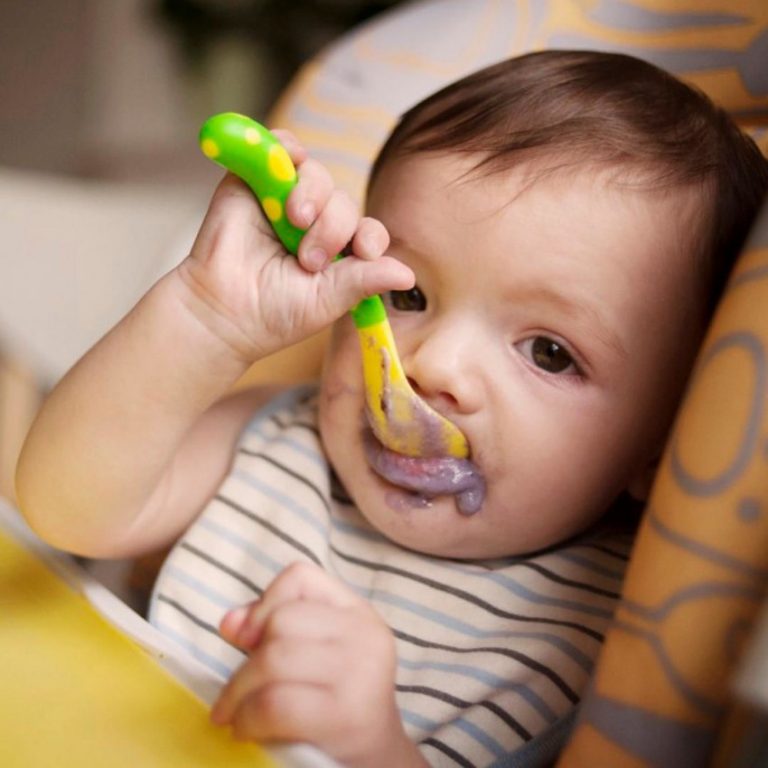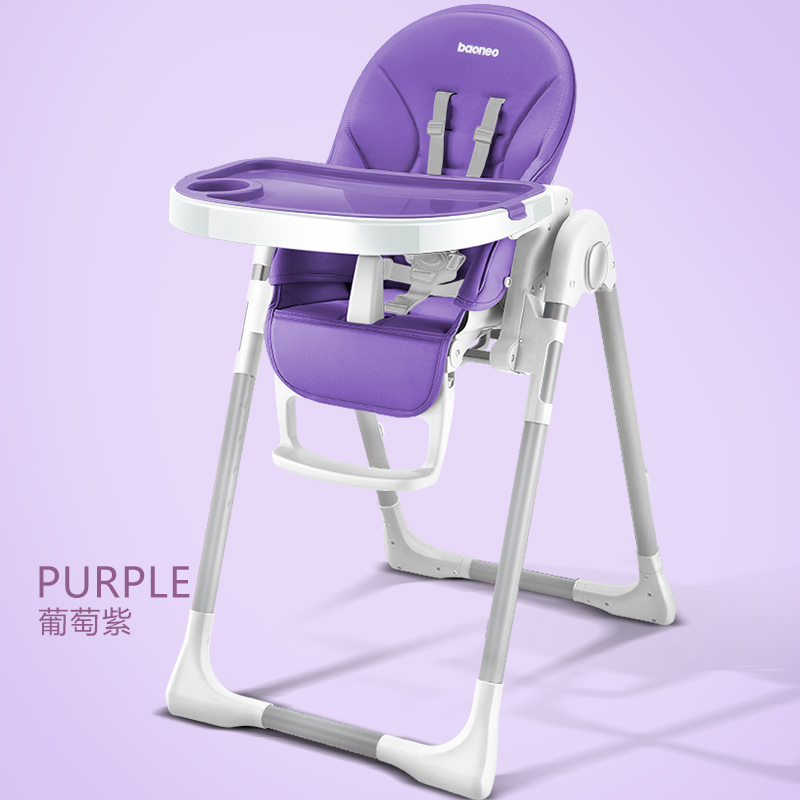Safe baby feeding
Baby formula feeding chart: How much formula by weight and age
Is your baby getting too much or too little formula? It's an important question that worries many new parents, especially those with newborns. When deciding how much formula to give your baby, it's important to watch their hunger cues as well as looking at guidelines based on age and weight. In general, before they're eating solids, babies need 2.5 ounces of formula per pound of body weight each day.
These guidelines are for babies who are exclusively formula-fed for the first 4 to 6 months, and then fed a combination of formula and solids up to age 1. If your baby is getting a combination of breast milk and formula, talk to their doctor for separate advice.
Your pediatrician can tell you where your baby falls on the growth charts, make sure they're growing steadily on their own growth curve, and help you ensure that they're getting a healthy amount of formula. If you're ever worried about your baby's growth, behavior, or development, talk with their doctor.
How much formula for a newborn
For the first few days, offer your newborn 1 to 2 ounces of formula every 2 or 3 hours. (At first, newborns may only take a half ounce of formula at a time.)
After the first few days, give your newborn 2 to 3 ounces of formula every 3 to 4 hours.
Initially it's best to feed your formula-fed newborn on demand, whenever they show signs that they're hungry. Because your little one can't tell you when they want a bottle, you'll need to learn to read their hunger cues. Crying is often a late sign of hunger, so if you can, try to catch the earlier signs that it's time for a feeding.
Here are some hunger cues to watch for:
- Smacking or licking their lips
- Rooting (moving their jaw, mouth, or head in search of food)
- Putting their hands to their mouth
- Opening their mouth
- Fussiness
- Sucking on things
- Becoming more alert
- Crying
As time passes, your newborn will begin to develop a fairly regular feeding schedule. You'll become familiar with their cues and needs, and knowing when and how much to feed them will be much easier.
You'll become familiar with their cues and needs, and knowing when and how much to feed them will be much easier.
Formula feeding chart by weight
During the first 4 to 6 months, when your baby isn't eating solid foods, here's a simple rule of thumb: Offer 2.5 ounces of formula per pound of body weight every 24 hours, with a maximum of about 32 ounces.
| Weight | Ounces of formula |
|---|---|
| 6 pounds | 15 fl oz every 24 hours |
| 7 pounds | 17.5 fl oz every 24 hours |
| 8 pounds | 20 fl oz every 24 hours |
| 9 pounds | 22.5 fl oz every 24 hours |
| 10 pounds | 25 fl oz every 24 hours |
| 11 pounds | 27.5 fl oz every 24 hours |
| 12 pounds | 30 fl oz every 24 hours |
These numbers aren't rigid rules. They offer a rough estimate for what your baby may need. Some babies will grow well while taking less than the recommended amount, while others consistently need more. Your baby's daily feedings will also vary according to their individual needs – in other words, they may want a bit more on some days and a bit less on others.
Your baby's daily feedings will also vary according to their individual needs – in other words, they may want a bit more on some days and a bit less on others.
Formula feeding chart by age
Here are typical amounts per day based on age:
| Age | Ounces of formula |
|---|---|
| Full-term newborn | 2 ounces per bottle every 3 to 4 hours |
| 1 month old | 3 to 4 ounces per bottle every 3 to 4 hours |
| 2 month old | 4 to 5 ounces per bottle every 3 to 4 hours |
| 3 month old | 4 to 6 ounces per bottle every 3 to 4 hours |
| 4 month old | 4 to 6 ounces per bottle, 4 to 6 times a day |
| 5 month old | 4 to 6 ounces per bottle, 4 to 6 times a day |
| 6 month old | 6 to 8 ounces per bottle, 4 to 5 times a day |
| 7 month old | 6 to 8 ounces per bottle, 3 to 5 times a day |
From 8 months old until their first birthday, you can expect your baby to have 7 to 8 ounces per bottle, 3 to 4 times a day.
As your baby gets older – and their tummy gets bigger – they'll drink fewer bottles a day with more formula in each. It's important not to overfeed your baby so they'll stay at a healthy weight. Your baby shouldn't have more than 32 ounces of formula in 24 hours.
When they reach their first birthday, they can stop drinking formula and transition to cow's milk in a bottle, sippy cup, straw cup, or open cup. Limit your toddler to 16 to 24 ounces (2 to 2.5 cups) a day of whole milk, so they have room for other healthy foods.
Signs that your baby's getting enough formula
Here are signs that your baby's getting all the formula they need:
- Steady weight gain. They continue to gain weight after their first 10 days and follow a healthy growth curve during their first year. (Most babies lose up to 7 to 10 percent of their birth weight in the first few days and then regain it by the time they're about 2 weeks old.)
- Happy baby.
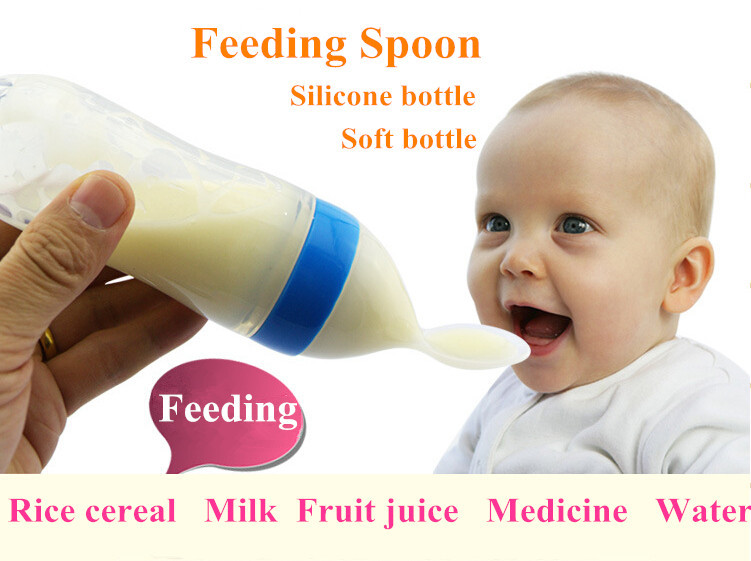 They seem relaxed and satisfied after a feeding.
They seem relaxed and satisfied after a feeding. - Wet diapers. They wet two to three diapers a day in the first few days after birth. Over the next few days, the amount should increase to at least five to six wet diapers a day.
Signs your baby's getting too much formula
Babies are usually good at eating the amount they need, but bottle-fed babies can drink too much at times. Here are the signs that they're getting too much formula:
- Vomiting after a feeding may be a sign that your baby had too much. (Spitting up is normal, vomiting isn't.)
- Tummy pain after a feeding can also be a sign of overfeeding. If your baby draws up their legs or their tummy seems tense, they may be in pain. (See other possible reasons for stomach pain in babies.)
If your baby seems to want to eat all the time, even after finishing a bottle, talk to your pediatrician. Using a pacifier may help soothe their need to suck.
Formula-feeding tips
- In general, babies eat when they're hungry and stop when they're full, so resist the temptation to encourage your baby to finish each bottle. Overfeeding during infancy can contribute to obesity later in life.
- Don't respond to your baby's every cry with a bottle. They may be crying because their diaper is wet, they're cold or hot, they need to be burped, or they want to be close to you. (Learn more about why babies cry, and how to soothe them.)
- Your baby may be hungrier than usual during growth spurts. These typically occur 10 to 14 days after birth and around 3 weeks, 6 weeks, 3 months, and 6 months of age.
Read more:
- Formula Feeding Problem Solver
- How to safely store and use formula
advertisement | page continues below
What is baby-led weaning and what foods are best for it?
Baby-led weaning is a way to introduce solid foods to babies. Instead of spoon-feeding baby cereal and purees, parents skip straight to finger foods and let their baby feed themself.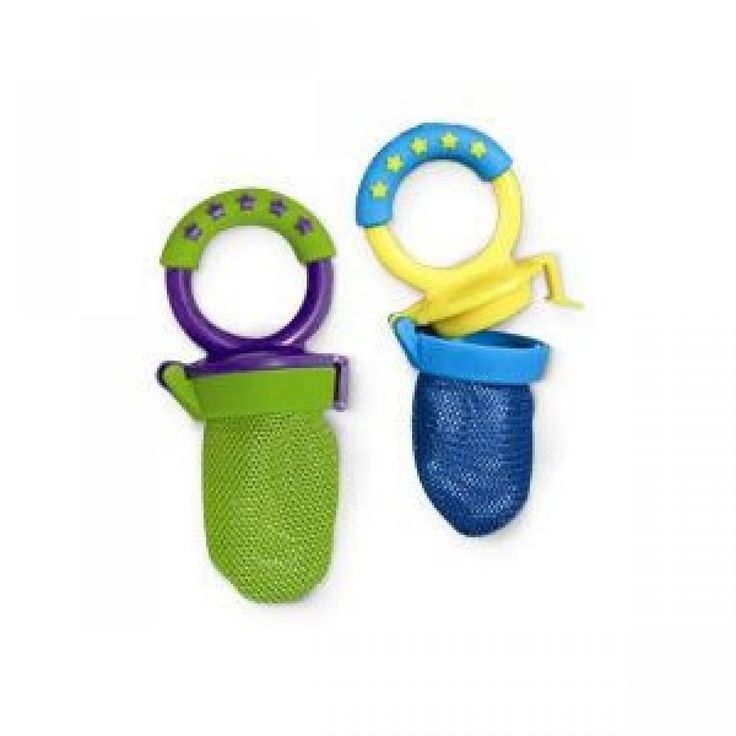 The best foods for baby-led weaning are large pieces of soft foods that are easy to grab and chew, like banana spears, baked apple slices, thin slices of toast, and soft-cooked meat. There isn't much research on the benefits and drawbacks of baby-led weaning, so talk to your pediatrician to see if it's a good fit for your baby.
The best foods for baby-led weaning are large pieces of soft foods that are easy to grab and chew, like banana spears, baked apple slices, thin slices of toast, and soft-cooked meat. There isn't much research on the benefits and drawbacks of baby-led weaning, so talk to your pediatrician to see if it's a good fit for your baby.
Baby-led weaning (BLW) is a method for starting your baby on solids. Instead of spoon-feeding them mushy cereals and purees, you put large chunks of soft food directly on the highchair tray or table, and let your baby grab the food and feed themself. It's called "baby-led" because you let your baby pick up the food and eat at their own pace, instead of controlling how much and how quickly they eat.
Just as with traditional spoon-feeding, your baby will continue to get most of their nutrition from breast milk or formula until they get used to eating solid food (usually around their first birthday).
Check out our videos to see how it's done:
- Baby-led weaning: Signs your baby is ready
- Baby-led weaning: Getting started
- Baby-led weaning: 9 great finger foods
- Baby-led weaning: Is gagging normal?
When to start baby-led weaning
Most babies are ready to start BLW when they're about 6 months old, though some may need more time.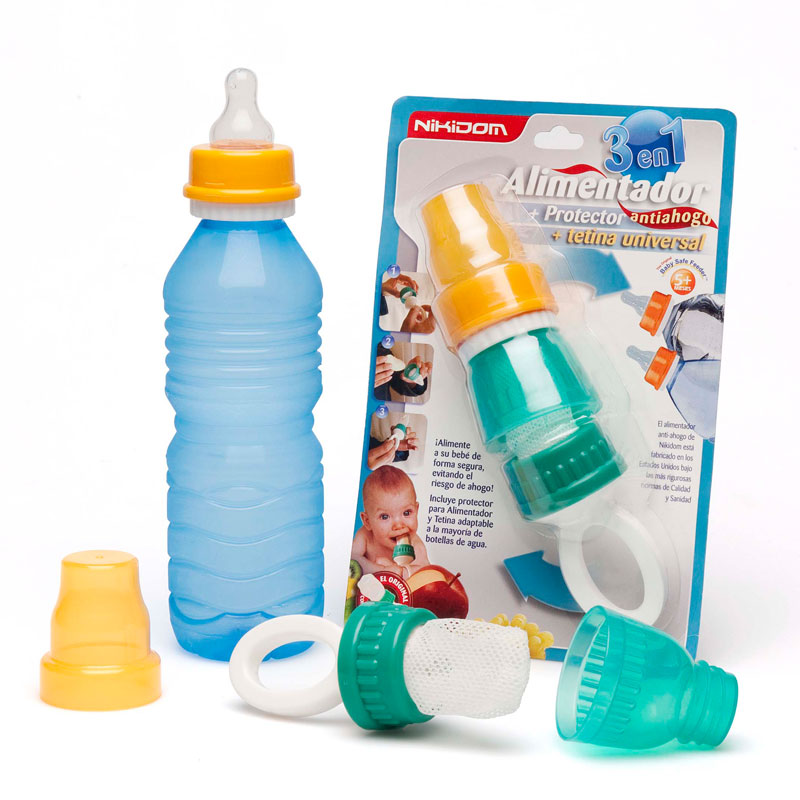 Your baby will give you a few signs they're ready for solid foods: If they can sit up without support, can grab and put objects in their mouth, and open their mouth when food is offered, they're probably ready to begin exploring table foods.
Your baby will give you a few signs they're ready for solid foods: If they can sit up without support, can grab and put objects in their mouth, and open their mouth when food is offered, they're probably ready to begin exploring table foods.
Keep in mind that BLW may not be right for babies with special needs or babies who are unable to pick up and chew food on their own. Talk with your baby's doctor before trying BLW, especially if:
- Your baby has special needs and can't chew very well.
- Your baby has difficulty picking up food and moving it to their mouth.
- Your baby was born prematurely. Premature babies have an adjusted developmental milestone schedule, so they may not be ready for solid food at 6 months – and they have different caloric needs in their first year.
How to start baby-led weaning
If your baby shows signs of readiness and their doctor says it's okay to try BLW, here are some tips for getting started:
- It will take your baby time to learn to eat solids, and in the meantime, they'll still be getting their nutrition primarily from breast milk or formula.
 BLW sessions can focus on fun and exploration. If your baby's hungry, it might be best to give them a bottle or nurse them before offering solid food, so they don't get frustrated.
BLW sessions can focus on fun and exploration. If your baby's hungry, it might be best to give them a bottle or nurse them before offering solid food, so they don't get frustrated. - BLW can be messy! Manage the mess with a large bib or smock. Placing a mat under your baby's highchair can make for easier cleanup, too.
- Make sure you or another adult is always watching carefully during meals and knows what to do if your baby starts choking. As long as you're watching them, BLW doesn't create a higher risk of choking.
- When it's time to feed your baby, sitting upright in a highchair, not leaning back, is the safest choice.
- Offer your baby soft or well-cooked food cut into sticks or strips that are at least as long as their fist, not bite-size pieces. They'll likely try to hold the food in their fists and smash it into their mouth at first. Over time, they'll learn to grip the food between their thumb and forefinger.
- Don't offer your baby foods that can be choking hazards, like nuts, grapes, popcorn, and foods cut into coins, including sausages and hot dogs.
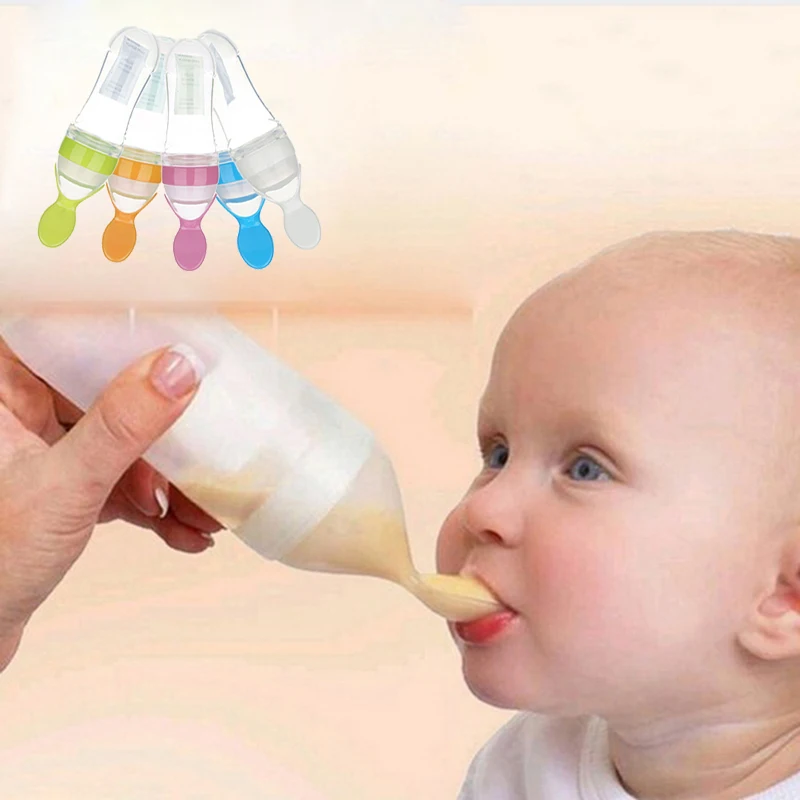
- Make sure your baby's food passes the "squish test" by checking whether you can squish it on the roof of your mouth with your tongue. That means no raw vegetables and no hard, raw fruit (such as apples) or citrus fruit (unless each segment is peeled). The exception is pieces of food that are large and fibrous enough that small pieces don't break off when sucked or chewed. For example, soft-cooked meat is okay, but cheese sticks are not.
- Put food directly on the highchair tray or table in front of your baby. (Bowls and plates will just end up on the floor.)
- Introduce new foods one at a time. Just as with spoon-feeding, wait three to five days after introducing a new food before trying the next one. That way, if your baby has an allergic reaction, you'll know which food probably caused it.
- Eat as a family whenever possible. Babies learn to eat by observing and imitating other family members. Family mealtimes can also help your baby feel like part of the group.
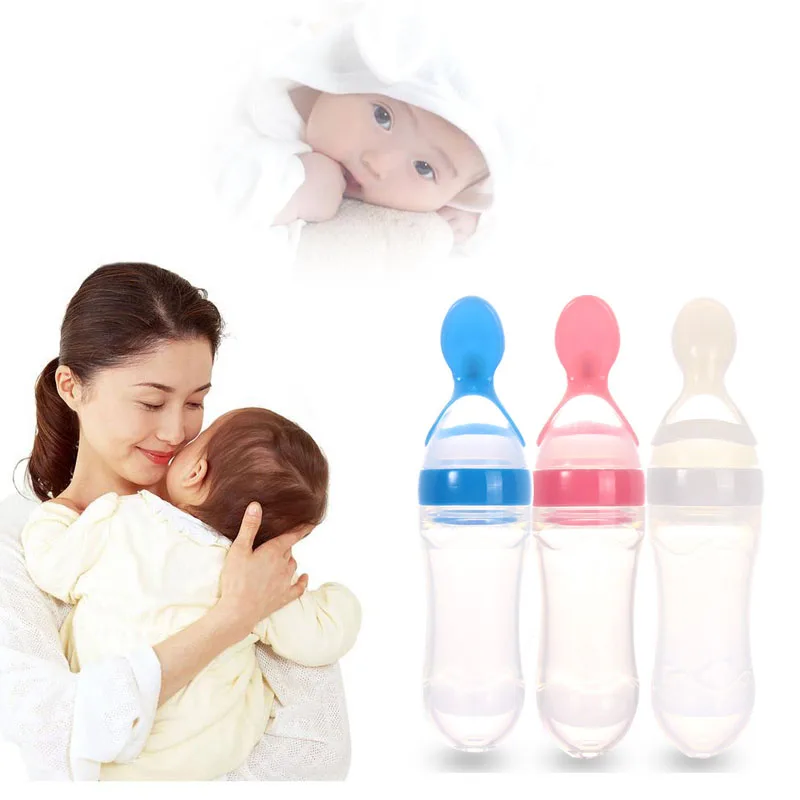
As with many other parenting approaches, what works for some families won't necessarily work for yours. Some families strictly follow the BLW approach, while others do a combination of BLW and spoon-feeding. For example, you could spoon-feed your baby purees and mashed food sometimes, but allow them to feed themself finger foods (like the ones listed below) at other times.
Good baby-led weaning foods
Some foods that are good to use with BLW include:
- Well-cooked vegetable sticks, including steamed carrots, zucchini, sweet potatoes, and beets
- Food with interesting shapes and textures, such as steamed broccoli and cauliflower florets, and slices of ripe avocado
- Soft, ripe fruits, including banana, papaya, pear, kiwi, melon, and soft-cooked apple
- Large strips of poached chicken or fully cooked steak. Babies won't be able to chew and swallow meat like steak, but they can gnaw and suck on it to get the flavor.
- Whole-grain or vegetable pasta in a shape that's easy to grab, like fusilli or penne
- Rice rolled into balls
- Lentil patties
- Salt-free rice cakes
- Pieces of tofu
As your baby progresses, they can start learning to dip their food chunks into hummus, unsweetened yogurt, and guacamole.
Gagging and choking in baby-led weaning
One concern about giving babies whole food to eat is whether 6-month-old babies are developmentally ready to chew and swallow chunks of food and whether these chunks – even when they're soft – are choking hazards.
Research suggests that baby-led weaning isn't associated with a greater risk of choking. As long as you're watching your baby while they eat and giving them easy-to-eat foods, baby-led weaning is safe.
Whether they're being spoon-fed or feeding themselves, many babies gag when they first start solids, and this can be disconcerting or even frightening.
Gagging is a normal reflex babies have as they learn to eat solids. Gagging brings food forward inside your baby's mouth so they can chew it more or try to swallow a smaller amount. As they get more experience with solid food, your baby will gag less often.
It's also normal for babies to gag as they get used to new flavors and textures. If your baby gags a lot, remember it's a temporary stage that your baby will get through. (If your baby's gagging doesn't improve on its own, talk with their doctor. There are some babies who need feeding therapy, usually with a speech therapist or occupational therapist.)
(If your baby's gagging doesn't improve on its own, talk with their doctor. There are some babies who need feeding therapy, usually with a speech therapist or occupational therapist.)
Here's how to recognize the difference between gagging and choking:
- A child who is gagging may push their tongue forward or out of their mouth and do a retching movement to try to bring food forward. Their eyes may water. They may cough or even vomit. Let your child continue to cough because that's the most effective way to resolve the problem.
- A child who is choking is unable to cry, cough, or gasp. They may make odd noises or no sound at all while opening their mouth. You may need to do back blows or chest thrusts to dislodge the blockage. It's a good idea to take an infant first aid class so you know what to do if your baby chokes.
The pros and cons of baby-led weaning
Many experts say more research is needed on baby-led weaning, but some studies have found it may have the following benefits:
- Healthy eating: Since babies feed themselves, BLW allows them to learn how to listen to their hunger cues and stop eating when they aren't hungry anymore, rather than relying on their parents to tell them when to stop eating.
 This may produce healthier eaters. Allowing babies to explore different food flavors and textures may make them more adventurous eaters who are more likely to eat a broad range of foods as they grow up.
This may produce healthier eaters. Allowing babies to explore different food flavors and textures may make them more adventurous eaters who are more likely to eat a broad range of foods as they grow up. - Skill development: By trying to grasp and eat chunks of food, infants practice fine motor skills. BLW allows babies to practice eye-hand coordination and picking up pieces of food using the pincer grasp.
- Can be easier for parents: Though you still need to supervise your baby closely, you won't need to spoon-feed your baby with BLW. Your baby can be part of your family's regular dinnertime flow.
There are also potential downsides to baby-led weaning. Some researchers are concerned about:
- Low calorie intake: Because babies are responsible for moderating their own eating, and because young babies aren't very experienced at feeding themselves, they may not eat as much food in their early months of BLW compared to spoon-feeding.

- Nutritional deficiencies: BLW babies may end up deficient in iron, especially if they don't drink formula, because they don't get the iron-fortified cereal that spoon-fed babies are often given.
It takes babies a while to get used to solid food. To ensure adequate nutrition, continue breastfeeding or bottle-feeding your baby during their first year, even after they start eating solid food. (Your baby's main source of nutrients will be breast milk or formula until they're about a year old.) As they learn to eat solid food, they'll need less breast milk or formula.
If you're not sure how much your baby needs to eat and when, check out our age-by-age guide to feeding.
Your baby's doctor will keep track of your baby's growth at well-child visits, so talk with them if you're concerned about how much your baby eats or weighs.
What is baby-led feeding?
Baby-led feeding is often just another name for baby-led weaning. "Weaning" has different meanings in different places – in the United Kingdom, where baby-led weaning started, it refers to the process of introducing solid foods to your baby.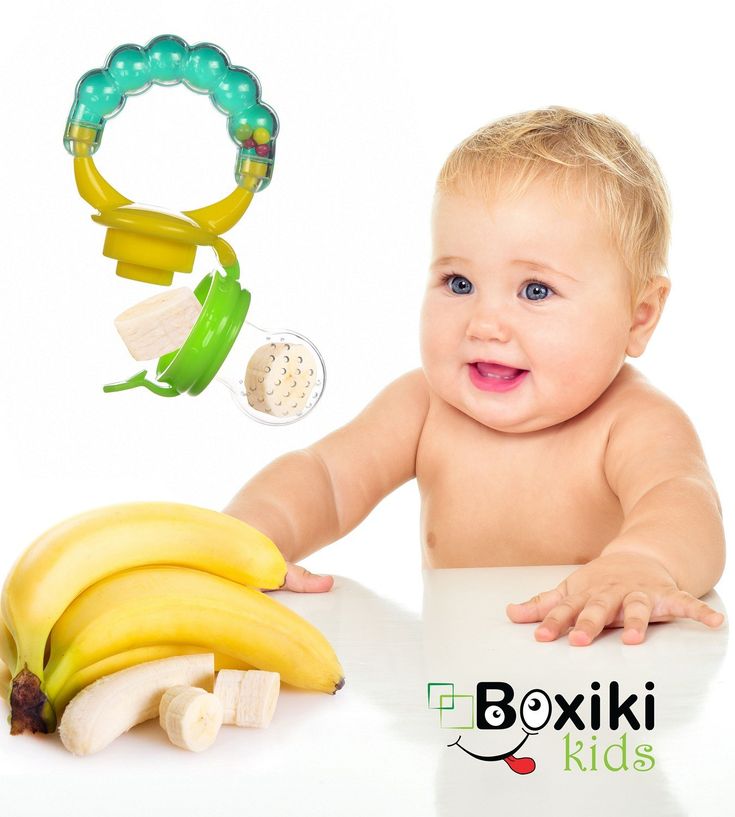 But in the United States, it most often refers to ending breast- or bottle-feeding.
But in the United States, it most often refers to ending breast- or bottle-feeding.
Because of that, baby-led weaning is sometimes referred to as "baby-led feeding" in the U.S.
For some, the terms are synonymous. For others, though, baby-led feeding is the unofficial name of a slightly different approach that blends traditional spoon-feeding and baby-led weaning techniques. That might mean offering purees when it's easier and faster, like at daycare or when your family is on the go, and then allowing your baby to eat soft table foods and finger foods at home. This method is also sometimes called modified baby-led weaning.
Baby-led weaning tips
There's no official guidance from the American Academy of Pediatrics (AAP) on baby-led weaning, but many experts say it's safe as long as your baby is developmentally ready to start eating solids. Here are some tips from experts on using BLW:
- Be flexible and be willing to use whatever method works best for your child.

- Make sure the food is developmentally appropriate for your child.
- Food for 6-month-olds doesn't need to be pureed, but it should be the texture, consistency, and size that the child can handle.
- Stay nearby and watch your child eat.
- Be mindful of choking hazards – don't give your baby big globs of sticky foods like peanut butter or hard foods like raw carrots and apples.
- Offer a food several times before deciding your baby doesn't like it. Sometimes, it just takes a little while for your baby to get used to a new flavor or texture.
And here are some comments on BLW from parents who used the method and liked it:
"[Baby-led weaning was] one of the best decisions we made with our daughter. She's a fantastic eater and eats a great variety of food. I also believe it made her a great restaurant eater. We always got compliments on how well-behaved she was, and people were always shocked to see a 7-month-old feeding herself in a restaurant. "
"
— Michele
"BLW worked great for us. I have never felt that because of BLW my son wasn't eating healthy foods. In fact, I thought the opposite because he wasn't getting anything processed."
— Heather
"We started baby-led weaning my little guy when he was 6 months old, and we've never looked back. We were really nervous at first about him choking, but in the four months we've been doing this, he hasn't choked once! I'm a huge advocate for BLW. My son will eat anything that I put in front of him and is so excited to try new foods."
— Mandy
"I love baby-led weaning, but it's probably not a magic bullet. I like it because it has freed up a lot of time for me. (I don't have to sit and spoon-feed at every meal.) And it allowed my son to be independent in choosing and eating food. It worked for us because my son was developmentally normal, at a normal weight, and had good manual dexterity."
— Laura
Check out our Community group on baby-led weaning to see what other questions and experiences parents have had with this technique.
Various breastfeeding positions
Try different breastfeeding positions to find the one that works best for you and your baby. You can see the options in our selection of photos
Share this information
There is no right or wrong way to hold the baby while
feeding, and mom and baby are sure to find their favorite position.
It is important that both you and your child feel comfortable. 1.2 It's good to learn a few different breastfeeding positions and techniques because life's circumstances often require us to be flexible, especially as your baby gets older and you start to leave the house more often.
Whatever position you choose to breastfeed your baby, remember a few simple rules.
- Prepare everything you need before feeding, including drinks, food, mobile phone, TV remote control, book or magazine. And do not forget to go to the toilet - the feeding process can take a long time!
- Make sure your baby is comfortable.
 Whichever position you choose, it's important to keep your baby strong, level, and provide good support for their head, neck, and spine.
Whichever position you choose, it's important to keep your baby strong, level, and provide good support for their head, neck, and spine. - You should also be comfortable. Don't stress. If necessary, use pillows of different sizes or rolls of towels to support your back or arms.
- Make sure your baby is latching on correctly. Proper grip is the key to comfort when breastfeeding.
- If your baby does not latch on well or you experience pain while feeding, contact a lactation consultant for help. The specialist will also be able to show you how to hold your baby more comfortably.
1. Relaxed feeding or reclining position
The relaxed feeding position, also known as biological feeding, 1 is often the first position for most mothers. If, immediately after birth, the baby is placed on the mother’s chest or stomach, normally, he instinctively reaches for the breast and tries to grab the nipple. This phenomenon is known as the breast seeking reflex.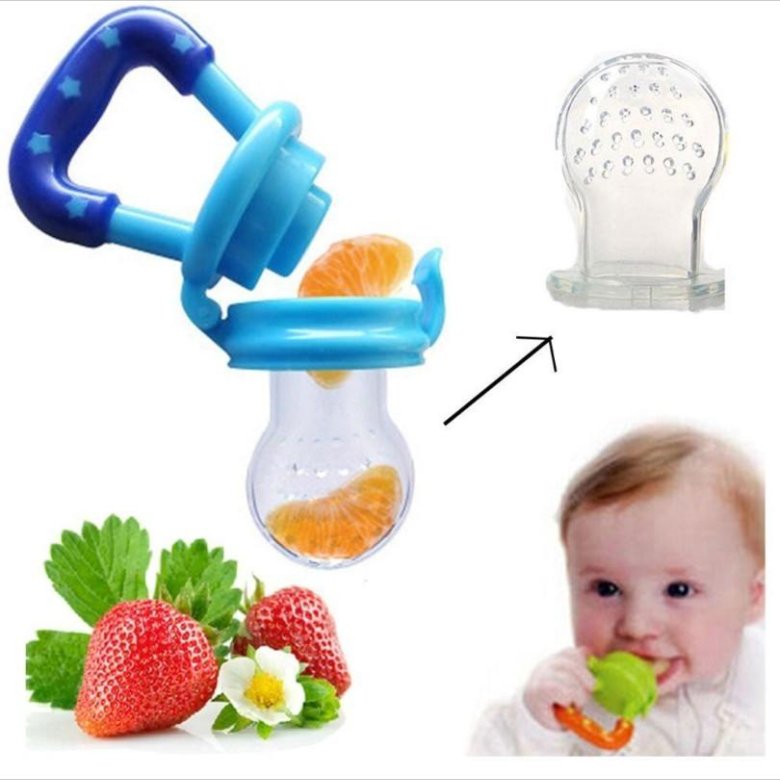 Skin-to-skin contact stimulates the infant's feeding instinct, and gravity helps him to latch onto the breast and maintain balance.
Skin-to-skin contact stimulates the infant's feeding instinct, and gravity helps him to latch onto the breast and maintain balance.
But it's not just newborns that can be fed in the reclining position - this position is great for babies of all ages. It can be especially helpful if your baby does not latch well in other positions or does not like to be touched during feeding, and also if you have too much milk flow or too large breasts. Isabelle, a mother from the UK, shares her experience: “I had large breasts, and the baby was born small - 2.7 kg, so it was not easy to find a comfortable position at first. After a few weeks, it became clear that there was no “correct” posture for me. As a result, I most often fed lying down, putting the baby on my chest. ”
It is more convenient to feed not lying flat on your back, but half-sitting, leaning on pillows. So you will have a back support and you will be able to watch the baby during feeding.
2. Cradle position
This is the classic
first thought of breastfeeding. Mom sits straight
Mom sits straight
, and the baby lies on her side on her arm, pressing his stomach against her stomach. 3 Although this is a very popular position, it is not always easy to master with newborns because it gives the baby less support. Try putting a pillow under your back, and put a special breastfeeding pillow on your knees and lean on it with your hands. So you can more reliably support the child, without overstraining your back and shoulders. Just make sure that the baby does not lie too high on the pillow for feeding. The breast should remain at a natural level so that the baby can grab it without effort, otherwise sore nipples cannot be avoided.
“I breastfed in the cradle position because it suited me perfectly! It was comfortable and I loved just sitting and looking at my little one,” recalls Rachel, a mother of two from Italy.
3. Cross Cradle
This breastfeeding position looks almost the same as Cradle, but the baby is on the other arm. 3 This gives your baby support around the neck and shoulders so he can tilt his head to latch on. This position is great for breastfeeding newborns and small babies, as well as for babies who do not latch well. Since the baby lies completely on the other hand, it becomes easier to control his position and you can adjust the chest with your free hand.
3 This gives your baby support around the neck and shoulders so he can tilt his head to latch on. This position is great for breastfeeding newborns and small babies, as well as for babies who do not latch well. Since the baby lies completely on the other hand, it becomes easier to control his position and you can adjust the chest with your free hand.
Julie, a UK mother of two, finds this position very practical: “I usually breastfeed my youngest in the cross cradle position. So I have a free second hand, and I can take care of an older baby at the same time. ”
Do not hold the baby's head at first, otherwise you may inadvertently press his chin against his chest. Because of this, the child will not be able to take the breast deeply, because the nipple will rest against the base of the tongue, and not against the palate, which will lead to inflammation of the nipples. As the child grows, this position becomes more comfortable, and he can rest his head on your palm (as shown in the photo above).
4. Underarm breastfeeding
In this position, also known as the “ball grip”, the mother sits with the baby lying along her arm at the side, legs towards the back of the chair (or any other seat). 3 Another comfortable position for newborn breastfeeding, you can give your baby good support, full control of his position and a good view of his face. And the baby feels safe in close contact with the mother's body. This position is especially good for those who have had a caesarean section or a premature birth, as well as mothers of twins and women with large breasts.
“When I breastfed my first daughter, I had very large K-sized breasts—twice the size of her head,” recalls Amy, an Australian mother of two. - I put rolls of towels under each breast, because they were very heavy, and fed my daughter in a pose from under the arm, but only sitting straighter so as not to crush her. This position was also convenient because I had a caesarean section and could not put the baby on my stomach. ”
”
5. Side-lying position
The side-lying position is ideal for a relaxed
nighttime feeding in bed or on the couch. If you had a
caesarean section or ruptures during childbirth, this position may be more comfortable than sitting down. 3 In this position, mother and baby lie side by side, tummy to tummy.
“It was difficult for me to sit during endless night feedings, firstly because of the caesarean section, and secondly because of lack of sleep,” recalls Francesca, a mother from the UK. “And then I discovered that you can feed your baby lying on your side and rest at the same time.”
“Because of the short tongue frenulum, Maisie could only properly latch on to her breasts while lying on her side. The lactation consultant showed me how it's done. In this position, the flow of milk was optimal for my daughter, and it was easier for her to keep the nipple in her mouth. As she got older, she became much better at grabbing her breasts in normal positions,” says Sarah, mother of two from Australia.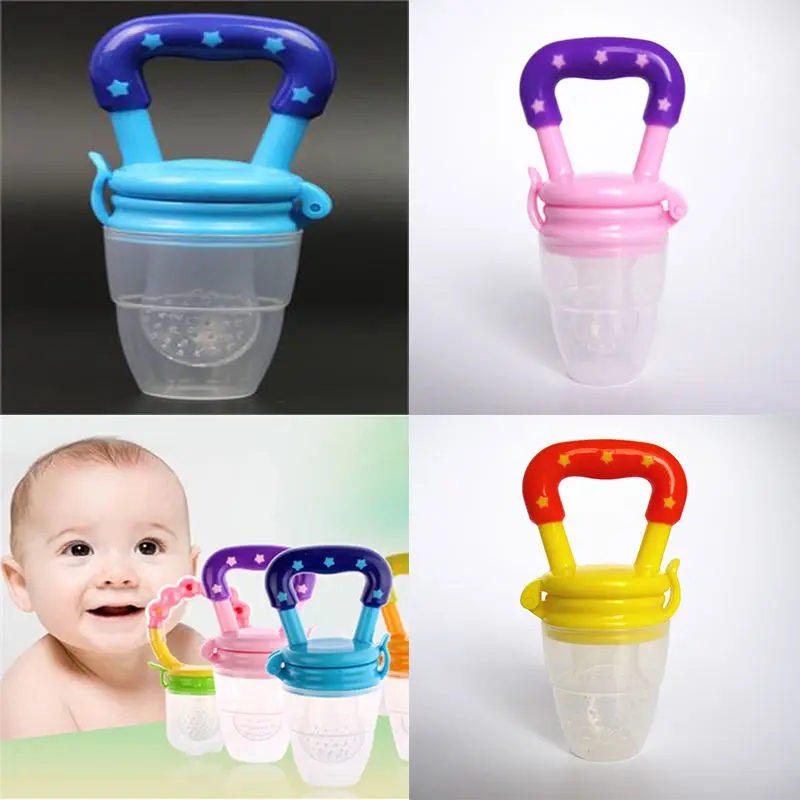
6. Relaxed breastfeeding after caesarean section
If you can't find a comfortable position for breastfeeding after caesarean section, 3 try holding the baby on your shoulder in a reclining position – this does not stress the postoperative suture and allows you to breastfeed your baby comfortably. You can also try side feeding.
7. Sitting upright breastfeeding or “koala pose”
When breastfeeding in an upright position or “koala pose”, the baby sits with a straight back and a raised head on the mother's hip. 4 This position can be tried even with a newborn if it is well supported, but it is especially convenient for feeding a grown child who can already sit up by himself. The upright sitting position, or “koala pose,” is great for toddlers who suffer from reflux or ear infections and feel better sitting. In addition, this pose may be suitable for children with a shortened frenulum of the tongue or reduced muscle tone.
“When my daughter got a little older, I would often feed her in an upright position, which was more comfortable for both of us, and I could still hold her close,” recalls Peggy, a mother from Switzerland. “Besides, it was possible to discreetly breastfeed her in public places.”
“Besides, it was possible to discreetly breastfeed her in public places.”
8. Overhanging position
In this position, the baby lies on his back, and the mother bends over him
on all fours so that the nipple falls directly into his mouth. 4 Some moms say this breastfeeding position is good to use occasionally for mastitis, when touching the breasts is especially unpleasant. Some say that this breastfeeding position helps with blockage of the milk ducts, although there is no scientific evidence for this yet. You can also feed in the “overhanging” position while sitting, kneeling over the baby on a bed or sofa, as well as reclining on your stomach with support on your elbows. Pillows of various sizes that you can lean on will help you avoid back and shoulder strain.
“I have breastfed several times in the 'overhang' position for clogged milk ducts when no other means of dissolving the blockage worked. And this pose seems to have helped. I think it's because of gravity, and also because the breasts were at a completely different angle than with normal feeding, and my daughter sucked her differently, ”says Ellie, a mother of two from the UK.![]()
Feeding in the "overhanging" position is unlikely to be practiced regularly, but in some cases this position may be useful.
“I used to breastfeed in the overhang position when my baby was having trouble latch-on,” says Lorna, mother of two in the UK. - This, of course, is not the most convenient way, but then I was ready for anything, if only he could capture the chest. We succeeded and have been breastfeeding for eight months now!”
9. Breastfeeding in a sling or in a sling
Breastfeeding in a sling takes some practice, but it can be used to go out, look after older children, or even do a little household chores.
The sling is also useful if the baby does not like to lie down or is often attached to the breast. Lindsey, a mother of two in the US, notes: “I used the carrier frequently for both of my children. When we were out, I tied the sarong around my neck and covered the carrier with it. Under such a cape, the baby can eat as much as he wants until he falls asleep.![]()
This breastfeeding position is best when the baby is already good at breastfeeding and can hold his head up by himself. Any slings are suitable for breastfeeding, including elastic and rings, as well as carrying bags. Whatever option you choose, the main thing is that you can always see the face of the child, and his chin does not rest against his chest.
10. Double hand-held breastfeeding
Double hand-held breastfeeding (or “double-ball grab”) is great for mothers of twins—you can breastfeed both at the same time and keep your arms relatively free. 4 When feeding in this position, it is advisable to use a special pillow for breastfeeding twins, especially at first. It will provide extra support and help keep both babies in the correct position, as well as reduce the burden on the abdomen if you had a caesarean section. In addition, the hands are freer, and if necessary, you can deal with one child without interfering with the second.
“My twins were born very tiny and had to be fed every two hours at any time of the day or night. Very soon it became clear: if I want to do anything besides feeding, I need to feed them both at the same time, - says Emma, mother of two children from the UK. “I breastfed them two by hand using a breastfeeding pillow.”
Very soon it became clear: if I want to do anything besides feeding, I need to feed them both at the same time, - says Emma, mother of two children from the UK. “I breastfed them two by hand using a breastfeeding pillow.”
Other good positions for breastfeeding twins are two criss-cross cradles, one baby in the cradle and the other close at hand, reclining feeding, or sitting upright (one baby on one side, the other on the other).
11. Breastfeeding in the "hand-supported" or "dancer's hand" position
muscle tone (which is typical for premature babies, children suffering from various diseases or Down syndrome), try supporting his head and your chest at the same time. 4 Grasp your chest with your palm underneath so that your thumb is on one side and all the others are on the other. Move your hand slightly forward so that your thumb and forefinger form a "U" just in front of your chest. With the other three fingers, continue to support the chest. With your thumb and forefinger, hold the baby's head while feeding so that his chin rests on the part of the palm between them, your thumb gently holds the baby on one cheek, and your index finger on the other.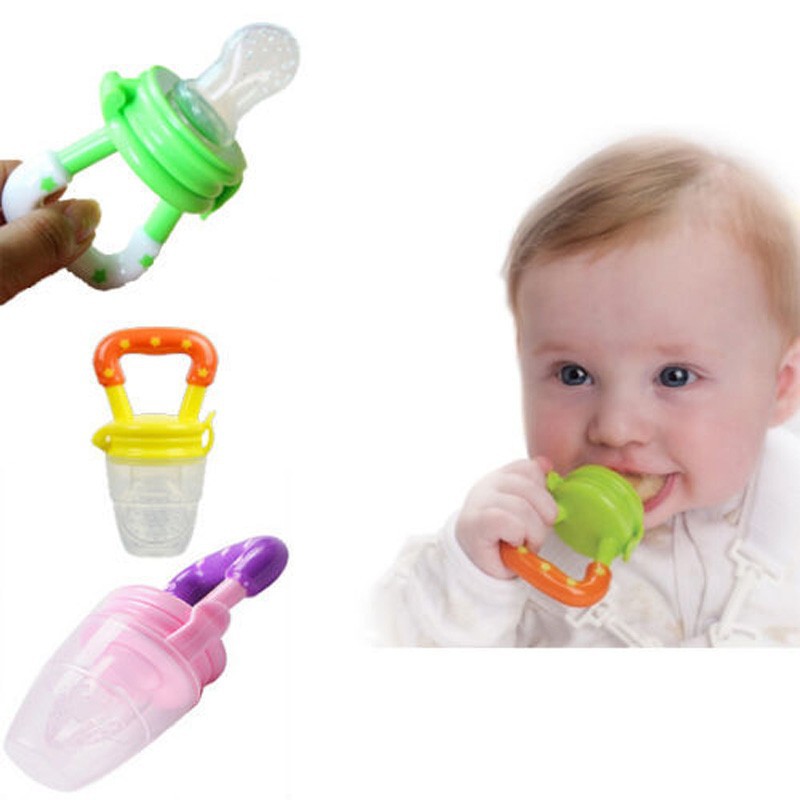 So the baby gets excellent support, and you can control his position and see if he is holding his breast.
So the baby gets excellent support, and you can control his position and see if he is holding his breast.
Literature
1 Colson SD et al. Optimal positions for the release of primitive neonatal reflexes stimulating breastfeeding. Early Hum Dev . 2008;84(7):441-449. - Colson S.D. et al., "Optimal Positions for Provoking Primitive Innate Reflexes to Induce Breastfeeding." Early Hume Dev. 2008;84(7):441-449.
2 UNICEF UK BFHI [ Internet ]. Off to the best start ; 2015 [ cited 2018 Feb ]. - UNICEF UK, Baby-Friendly Hospital Initiative, Start the Best You Can [Internet]. 2015 [cited February 2018].
3 Cadwell K. Latching - On and Suckling of the Healthy Term Neonate: Breastfeeding Assessment. J Midwifery & Women's Health. 2007;52(6):638-642. — Cadwell, K., "Latching and sucking in healthy newborns: evaluation of breastfeeding." F Midwifery Women Health. 2007;52(6):638-642.
J Midwifery & Women's Health. 2007;52(6):638-642. — Cadwell, K., "Latching and sucking in healthy newborns: evaluation of breastfeeding." F Midwifery Women Health. 2007;52(6):638-642.
4 Wambach K, Riordan J, editors. Breastfeeding and human lactation. Jones & Bartlett Learning ; 2014. 966 p . - Wambach K., Riordan J., "Breastfeeding and female lactation". Burlington, MA: Publishing House Jones & Bartlett Learning ; 2014. Pp. 966.
WHO | Supplementary feeding
In cases where breast milk is no longer sufficient to meet the nutritional needs of the infant, supplementary food should be included in the child's diet. The transition from exclusive breastfeeding to food consumed in the family, which is called supplementary feeding, usually occurs between 6 and 18-24 months of age, which is a very vulnerable stage.![]() This is when the onset of malnutrition in many infants is a significant factor in the high prevalence of malnutrition among children under five years of age worldwide. WHO estimates that 2 out of 25 children in low-income countries are stunted.
This is when the onset of malnutrition in many infants is a significant factor in the high prevalence of malnutrition among children under five years of age worldwide. WHO estimates that 2 out of 25 children in low-income countries are stunted.
WHO/J. Muriel
Complementary feeding should be timely, which means that all infants should begin to receive nutrition in addition to breast milk from 6 months. It must be adequate, which means that complementary foods should be given in the quantity, frequency, sequence, and variety of foods to meet the nutritional needs of the growing baby while breastfeeding continues. Food should be prepared and served in a safe manner, that is, care should be taken to minimize the risk of pathogen contamination. And they should be fed in an appropriate way, which means that their texture should be appropriate for the age of the child and that flexible feeding is applied, following the principles of psycho-social care.
The adequacy of complementary foods (adequacy is a shorthand for timely, adequate, safe and appropriate) depends not only on the availability of a variety of foods in the family, but also on the feeding methods used by caregivers.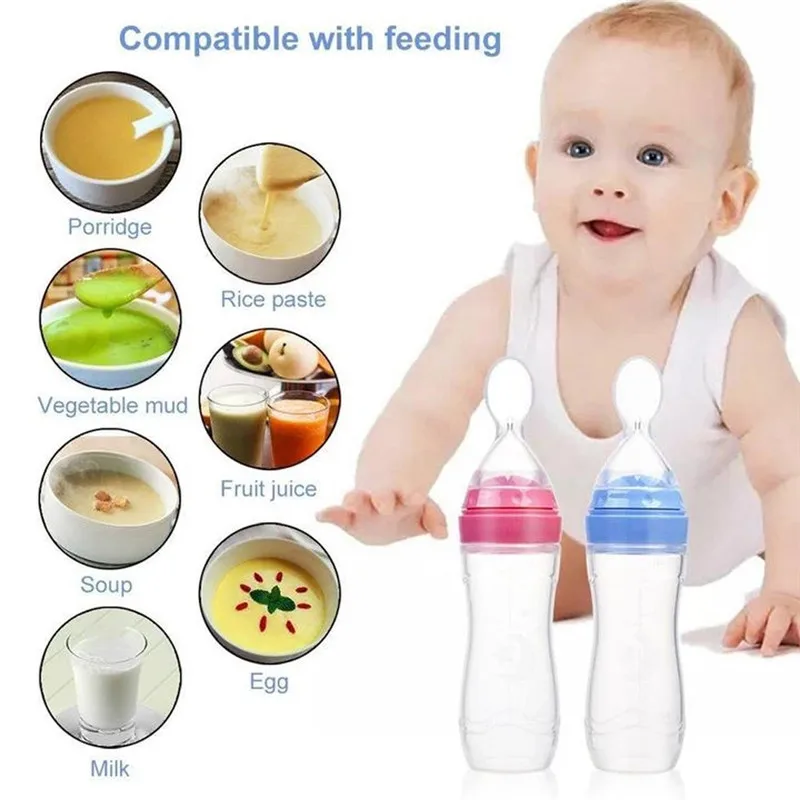 Feeding young children requires active care and stimulation, where the caregiver responds to the child's signals of hunger and encourages the child to eat. Such feeding is also referred to as active or flexible feeding.
Feeding young children requires active care and stimulation, where the caregiver responds to the child's signals of hunger and encourages the child to eat. Such feeding is also referred to as active or flexible feeding.
WHO recommends that infants be given complementary foods from 6 months in addition to breast milk, initially 2-3 times a day at 6-8 months of age, increasing to 3-4 times a day at 9-11 months, and at 12-24 months additionally include 1-2 times a day additional nutritious food, if desired.
Inappropriate feeding practices are often a more important determinant of inadequate food intake than family food availability. WHO has developed a protocol for tailoring feeding recommendations to allow program managers to find out local feeding practices, common feeding problems and suitable complementary foods. The protocol builds on existing information and suggests that improved feeding recommendations be tested in families. WHO recommends using this protocol to develop interventions to improve complementary nutrition and include it in the process of adapting the Integrated Management of Childhood Illness strategy.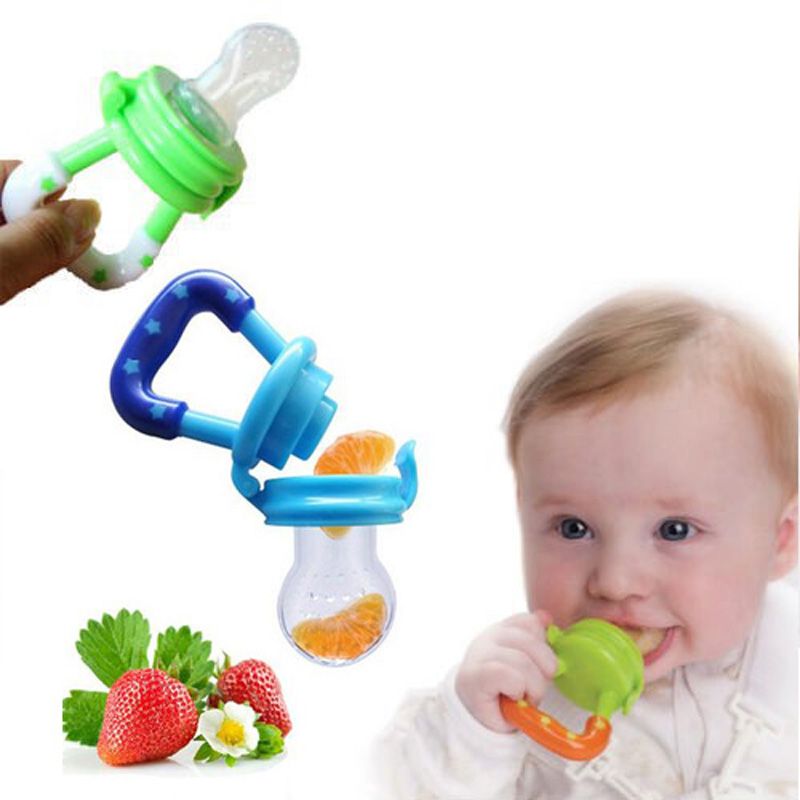
Research has shown that caregivers need skilled support to feed their infants properly. Guidelines on appropriate feeding are included in the Early Childhood Feeding Advisory, Guidelines and First-Level Health Workers Training Course on Integrated Management of Childhood Illness. WHO has produced a guide, Supplementary Feeding: Family Table Food for Breastfed Children, which provides more detailed guidance for health care workers on how to support supplementary feeding.
The WHO Global Consultation on Supplementary Feeding, 10-13 December 2001, resulted in updated recommendations on good feeding practices and guidance for program managers on their implementation. Background material prepared for these consultations is published in the Special Supplement to Food and Nutrition Bulletin 24(1) 2003 and supplements the WHO/UNICEF publication Supplementary Feeding of Young Children in Developing Countries: A Review of Current Scientific Knowledge, 1998, WHO/NUT/98.1. The Pan American Health Organization Guidelines on Complementary Feeding for Breastfed Children (2003) summarize the current scientific evidence on supplementary feeding and are intended to guide policy and programmatic action at the global, national and local levels, and The Guidelines for Feeding Non-Breastfeeding Children 6-24 Months of Age (2005) provide guidance on feeding children who are not breastfed.








